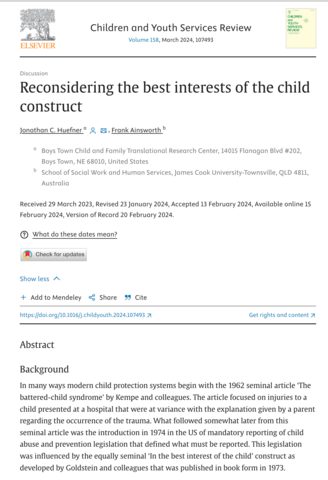Abstract
Background
In many ways modern child protection systems begin with the 1962 seminal article ‘The battered-child syndrome’ by Kempe and colleagues. The article focused on injuries to a child presented at a hospital that were at variance with the explanation given by a parent regarding the occurrence of the trauma. What followed somewhat later from this seminal article was the introduction in 1974 in the US of mandatory reporting of child abuse and prevention legislation that defined what must be reported. This legislation was influenced by the equally seminal ‘In the best interest of the child’ construct as developed by Goldstein and colleagues that was published in book form in 1973.
Objective
The purpose of this commentary is to call attention to limitations to how the “best interests of the child” has been implemented.
Conclusion
This article provides an overview of criticisms of the best interests construct and suggestions that the construct is a dated view about what is in a child’s best interests. There is a need for a new balance between explanations about child abuse and neglect (CAN) that takes account of poverty, social disadvantage, and the interests of children and their families.

